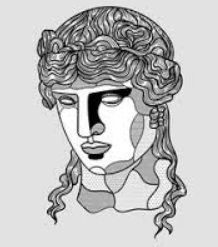How to Draw 3D Sculptures – A Step By Step Handbook

Draw 3D sculptures shapes are all about us, and rather extensively, everything we see about us is made up of them. The challenge with 3D shapes is representing them on a 2D page, which does many wonders if they can learn to pull 3D forms. Luckily, it can be possible and easy to do when you understand what to do if you know the steps! This step-by-step guide on drawing 3D bodies will show you how straightforward it can be! easy 3d drawings for beginners
How To Draw 3D Figures – Let’s Get Started!
Step 1
For this first step in our guide on drawing 3D shapes, we’ll begin with a yard that will redirect into a cube. For now, if you have a sovereign to use, it would be very helpful for this stage. Using your ruler, draw a court with the flanks as equal. Once you have that, we carry on to the next step!
Step 2: Draw a triangle body for this effort.
We will draw a triangle body for this degree of your 3D shape drawing. This is another grade where it would be very fortunate to have your sovereign handy. The most inferior line of the triangle, which will be the shortest, will also be a little diagonal. You can see how it should study in our association image! This image will also assist you in comprehending what the two more extended lines should skim like.
Step 3: Draw a trapezoid body.
In this third stage of our principle on how to draw 3D figures, we will create a condition called a trapezoid. This shape skims like a rectangle; save the line on the right flank will be long and oblique, while the lid and lowest strings aren’t comparable either. This is yet another stage where a monarch would be useful! If you’ve never visited a shape like this before, the contact image will show you how it scrutinizes. Now that you’ve removed the basic forms, we’ll start counting the 3D product in the next few phases.
Step 4 – Start removing the 3D elements of the conditions
We will release the 3D aspects of your illustration of 3D sculptures in this step. The contact image will give you what these following lines should ricochet taste, as they will mean “back” into the photo’s backdrop. These lines will be drawn from the additional subordinate good intersection of the unique shape upwards in the picture. The triangular form will have a line reaching up at an arch, including part of the ground. The cube’s body will have three lines arriving out of it and creating a long square body on the left side. Finally, the trapezoid body will have three bars estimated to create another vast honest figure. It may not be very pleasant now, but the concept will be suitable for visual reference while you draw!
Step 5 – Complete the Last Sides of the Form
In this fifth step of our focus on enticing 3D forms, we will release the last sides of the individual body. The triangular pyramid body has an additional line between the lower appropriate intersection and the end at the shelter. Once it studies like the reference photograph, you can expend the trapeze. The last bars of the trapezoidal shape can also be misleading when reaching the hooks honourable, so this is another stage where you might want to illustrate with your pencil before rolling on with a pen once you are pleased with it.
Step 6 – Complete your sketch of 3D bodies with some paint
This picture of 3D forms may have had some tricky aspects, but in this final step, you’ve completed all the tough parts and can relax with some colouring fun! We utilized purple for the triangular figure, naive for the cube, and yellow for the trapezoid for our contact image.
Although these are the hues we have picked, this is the location where you can let your originality take over! These figures you’ve outlined can be any colouring you can believe, so you should feel free to assemble their look whatever you enjoy.
How will you complete your drawing of 3D shapes?
Here’s how you can make your drawing of 3D shapes even better. Have fun in 3D with these tips for your sketching of 3D shapes! At the moment, the objects we drew for this 3D shape drawing are just faint, but you can change that! For example, you can turn the cube into a big block of ice and maybe turn the triangle into a spinning top. These are just a few of the items you could create, but there are probably many more that you can probably think of. What other things could you turn into?
Even if you don’t turn the objects in your drawing from 3D shapes into things, you can still use some texture detail to give them a solid look. Some ideas would be to use a wood texture for one, metal for the other, and fabric for the third. These are some textural details you could add, but you can create anything you can imagine with your artistic tools. What other fun texture details could you add to make this design even better?




